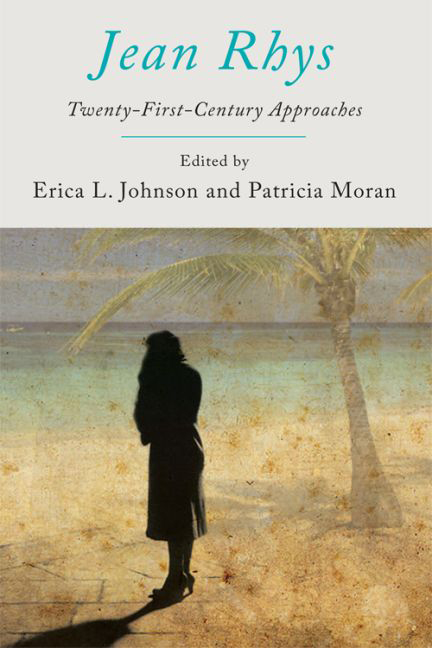Book contents
- Frontmatter
- Contents
- List of Figures
- Acknowledgements
- Notes on Contributors
- Introduction: The Haunting of Jean Rhys
- PART I Rhys and Modernist Aesthetics
- PART II Postcolonial Rhys
- 4 Jean Rhys's Environmental Language: Oppositions, Dialogues and Silences
- 5 Caribbean Formations in the Rhysian Corpus
- 6 ‘From Black to Red’: Jean Rhys's Use of Dress in Wide Sargasso Sea
- 7 The Discourses of Jean Rhys: Resistance, Ambivalence and Creole Indeterminacy
- PART III Affective Rhys
- Bibliography
- Index
6 - ‘From Black to Red’: Jean Rhys's Use of Dress in Wide Sargasso Sea
from PART II - Postcolonial Rhys
Published online by Cambridge University Press: 12 September 2017
- Frontmatter
- Contents
- List of Figures
- Acknowledgements
- Notes on Contributors
- Introduction: The Haunting of Jean Rhys
- PART I Rhys and Modernist Aesthetics
- PART II Postcolonial Rhys
- 4 Jean Rhys's Environmental Language: Oppositions, Dialogues and Silences
- 5 Caribbean Formations in the Rhysian Corpus
- 6 ‘From Black to Red’: Jean Rhys's Use of Dress in Wide Sargasso Sea
- 7 The Discourses of Jean Rhys: Resistance, Ambivalence and Creole Indeterminacy
- PART III Affective Rhys
- Bibliography
- Index
Summary
At the end of her last novel, Wide Sargasso Sea (1966), Antoinette, the central protagonist, finding herself abject, destitute and alone in a foreign country, muses upon what little remains to her that is still of any consequence: ‘my red dress, that has a meaning’. In 1960 Rhys wrote privately to her daughter, Mayvonne Merman, ‘My dream is to finish my book, get a face lift and a bright red wig. Also a lovely fur coat. Underneath I will wear a purple dress and ropes of pearls, or what do you say to rags? Then, in all my glory, I will come and see you.’ The importance that Rhys attaches to dress in her fantasy life – even at the age of seventy – mirrors the importance that dress had held throughout her writing career. This fascination with clothing dates back to the neverending search for the unattainable: ‘the dress, the perfect Dress, beautiful, beautifying, possible to be worn’ that gave one story in her first published collection, ‘The Left Bank’ and Other Stories (1927) its title, ‘Illusion’.
Dress is integral to Rhys's vision as a writer and to the manner in which she communicates that vision. As an essential condition of subjectivity dress articulates the body and in ‘articulating the body, it simultaneously articulates the psyche’. Freud termed the ego a ‘bodyego’, that is, a mental projection of the surface of one's physical body, and that bodily surface, in practice, is a clothed body, made visible to others and perceived through dress. However, the potency of dress as a signifier in Rhys's oeuvre is not only due to its articulation of the body but also to its prominent role in the dreamscapes of her fiction: dress is present in imagination and fantasy, and satisfies visceral longings for sensual pleasures in her characters’ lives. As Iris Marion Young puts it, ‘Women take pleasure in clothes, not just in wearing clothes, but also in looking at clothes and looking at images of women in clothes, because they encourage fantasies of transport and transformation.’ Moreover, Rhys's ‘work on representing memory and psychic states places her at the centre of modernist debates about female subjectivity and aesthetics’.
- Type
- Chapter
- Information
- Jean RhysTwenty-First-Century Approaches, pp. 123 - 145Publisher: Edinburgh University PressPrint publication year: 2015



